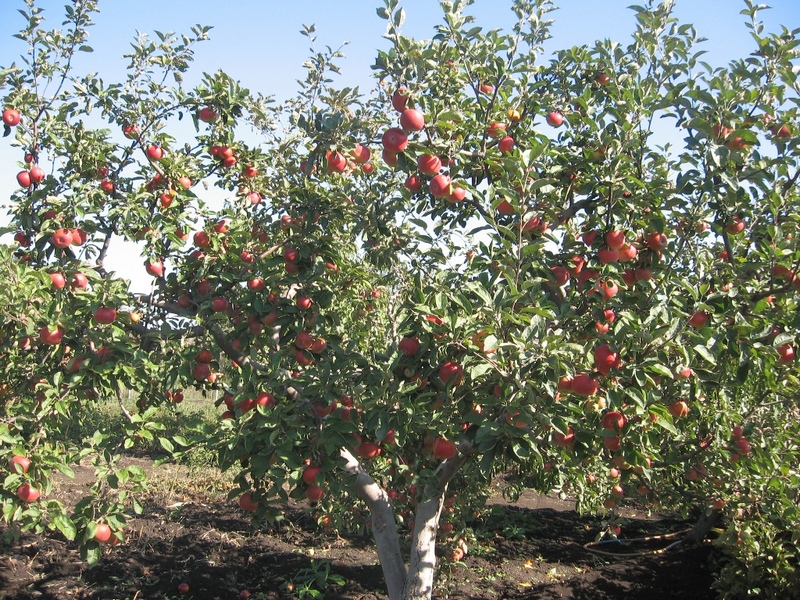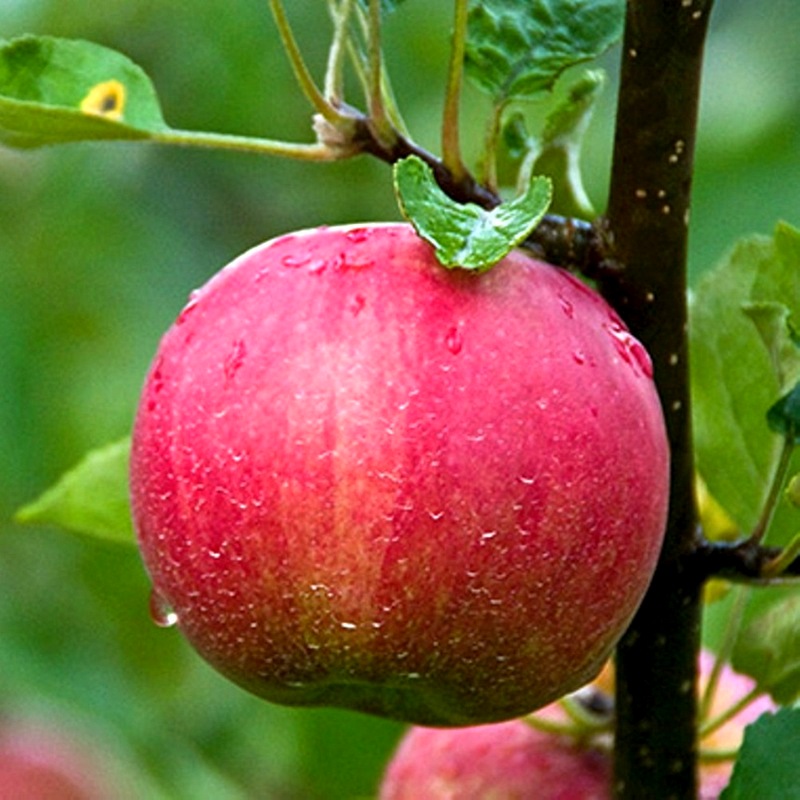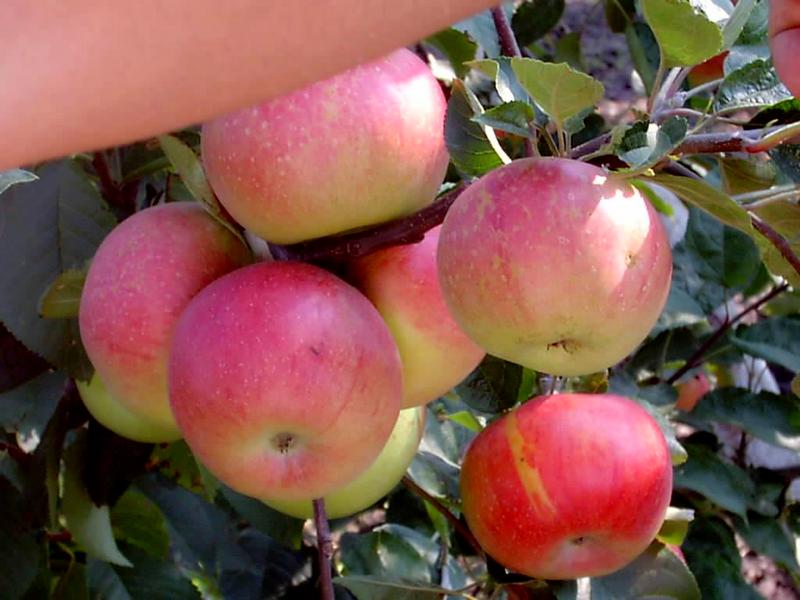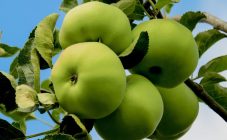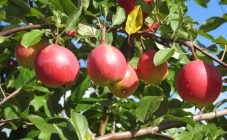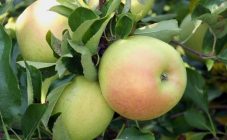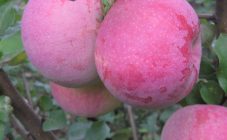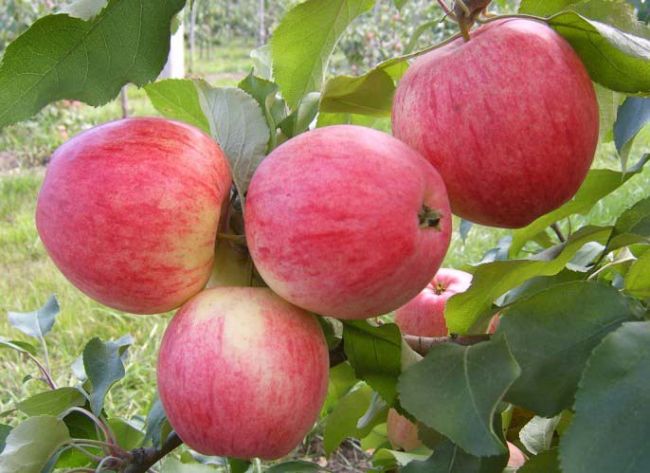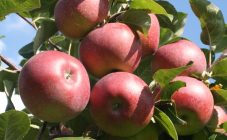Content:
The genus Apple tree has several dozen different species. These are decorative forms of apple trees and edible species.
Edible apple varieties have been known for so long that they are mentioned in the Bible. Ripe juicy apples contain almost the entire periodic table. Potassium and magnesium salts are necessary for the work of the heart muscle, iron, which is part of blood hemoglobin, copper, manganese and other trace elements, the seeds contain iodine, which regulates the thyroid gland. In addition, apples contain a unique set of organic acids, vitamins and peptide substances. Apples are actively used for weight control in various diets.
As one of the most sought-after products, apples are grown both commercially and in private garden plots. The choice of the variety depends on the climatic conditions of the area and the further use of the fruits.
Breeding history
Apple variety Jonathan owes its appearance to the selection of American scientists in the 1880s. The basis for the selection was the seedlings of the varieties Aesop Spitzenburg. According to one of the theories, Rachel Hingley developed this variety and gave it the name of her husband - Jonathan. Also, these apples are known under the names: apple tree Jonotanovy tree, Winter red or Horoshavka winter.
Initial breeding experiments took place in Ohio (USA). The climate in the state is mild, the temperature in winter rarely drops below -1 ° C degrees. Since the 1950s, apple trees have spread throughout the territory of Ukraine, while in the Russian Federation they are found only in the North Caucasus, where the climate is milder. This territorial distribution is due to the low resistance of the variety to subzero temperatures.
Description of apple tree Jonathan
Externally, the Jonathan tree is of medium height, with a spreading, wide-round crown formed by skeletal branches extending at sharp angles from the trunk. Over time, the branches droop under the weight of the apple fruit.
The bark of the tree trunk is light brown with a greenish tint. Fruits are capable of being tied both on annual growths, fruit twigs, and on ringlets or spears. Thus, the apple tree has mixed fruiting.
The Jonathan apple variety is characterized by abundant shoots. Shoots are brownish green, extremely pubescent. Leaves are medium in size, elongated oval, with a raised wavy edge. Matte leaves with slight wrinkles have a distinctive bluish-silvery bloom.
The kidneys are characterized by a moderate level of excitability. Trees are characterized by abundant flowering in the mid-late period.
The Jonathan apple variety is distinguished by the ability to self-fertility, as a result of auto-pollination, the ovaries form 5-7% of the flowers. Pollen vitality indicators are 26-41%, with natural pollination 16-32% of fruits are set, i.e. it is necessary to use pollination preparations (for example, Golden Delicious, Idared, Usmanskoe winter, etc.).
The average weight of apples is 100-150 g. Fruits are round-conical, mostly even or slightly ribbed. The color of apples ranges from greenish yellow to dark carmine with a raspberry hue. The skin of the fruit is elastic, but at the same time thin. Subcutaneous points are poorly visible, rarely a type of reticular rustiness can appear.
The stalk of apples is of medium length, deep with a characteristic rustiness. The saucer is deep, with inconspicuous folds, almost with sheer walls. Closed cup.An elongated, funnel-shaped subacheal tube of medium width. The seed chambers in the pulp are closed with a dense casing.
The pulp of apples is light yellow, when ripe it acquires a light creamy shade. Dense aromatic, very juicy, with subtle sourness, excellent dessert taste. When evaluated on a 5-point tasting scale, the variety gets 4.4-4.5 points.
The period of removable ripeness of apples falls on the end of September. When stored in fruit storages, they can lie until February, in the refrigerator until April-May. If the storage conditions are violated, the pulp of the apples becomes covered with bitter spots.
Features of agricultural technology
Jonared apple is a fast-growing variety, fruiting begins from 4-5 years after planting. The variety is picky about lighting; there should be no shade in the growing area. The ideal soils will be sandy loam and loamy.
The best time for planting is mid-spring. The planting process is traditional:
- Dig a hole 0.7 m deep and 1 m wide;
- Fill 1/3 with organic fertilizers and mix with the soil in the pit;
- Drive a peg firmly - the future support for the seedling;
- After a few days, plant a plant and cover with earth;
- Tamp the soil and water abundantly;
- Be sure to mulch the trunk circle with organic matter.
Apple tree Jonathan needs regular watering, loosening the soil, feeding and pruning. Timely need to carry out treatment from pathogens of fungal diseases and rodents.
Advantages and disadvantages
The undeniable benefits of the Jonathan variety include:
- Fruiting for 4-5 years. During the season, a young tree can produce up to 18 kg of apples. For an apple tree over 10 years old, the yield is 40-85 kg per tree;
- Suitable for commercial cultivation;
- Long shelf life, resistance to transportation;
- Excellent taste: aromatic taste and juicy pulp;
- Resistance to scab disease.
The main disadvantages of the apple tree:
- The varietal feature is a low level of frost resistance, freezing of wood even in perennial trees;
- The defeat of the harvested apples during storage with spotting;
- Strong susceptibility to powdery mildew disease.
Apples of the Jonathan variety are universal in their raw form, as raw materials for table wines, in the form of preserves (juices, preserves, jams, jellies, mashed potatoes). This is due to its high sugar content and tender pulp. The variety has a high yield and early fruiting. Already from a young tree, you can get a bountiful harvest of sweet apples. However, poor frost resistance suggests growing in areas where the winter season is mild enough.
